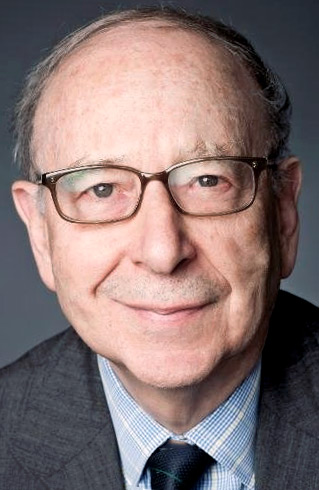

Domain Names |
Sponsored by |

|
 No industry is immune from cybersquatting - not even the legal industry. In three recent (and unrelated) UDRP decisions, law firms won decisions ordering the transfer of domain names that contain their trademarks. One of the cases involved Alston & Bird, the large law firm where I began my legal career and first learned about domain name disputes 20 years ago. As the UDRP decision describes it, Alston & Bird is a well-known law firm founded in 1893 with offices throughout the world. more
No industry is immune from cybersquatting - not even the legal industry. In three recent (and unrelated) UDRP decisions, law firms won decisions ordering the transfer of domain names that contain their trademarks. One of the cases involved Alston & Bird, the large law firm where I began my legal career and first learned about domain name disputes 20 years ago. As the UDRP decision describes it, Alston & Bird is a well-known law firm founded in 1893 with offices throughout the world. more
 First of all, I am biased. I am a common sense thinker who tries to analyze risk and reward based on societal trends and conventional wisdom. Watching the new gTLDs (generic Top Level Domains) launch over the last 2 years reminds me of the circus we are now seeing in the U.S. election. Myself, a self-proclaimed libertarian, can now be labeled as the establishment, while the so-called "outsiders" act and behave like they are not politicians yet seem to be masters of messaging and propaganda. more
First of all, I am biased. I am a common sense thinker who tries to analyze risk and reward based on societal trends and conventional wisdom. Watching the new gTLDs (generic Top Level Domains) launch over the last 2 years reminds me of the circus we are now seeing in the U.S. election. Myself, a self-proclaimed libertarian, can now be labeled as the establishment, while the so-called "outsiders" act and behave like they are not politicians yet seem to be masters of messaging and propaganda. more
 Cyberflight (defined as strategically transferring accused domain names to another registrar or registrant upon receipt of a complaint) was a sufficient irritant by 2013 for the ICANN to adopt recommendations to amend the Rules of the Uniform Domain Name Dispute Resolution Policy (UDRP). Effective July 1, 2015 the Rules now include a requirement for locking the domain as well as a change in the timing of transmitting the complaint to respondents. Before the amendment there had been no uniform approach to locking. more
Cyberflight (defined as strategically transferring accused domain names to another registrar or registrant upon receipt of a complaint) was a sufficient irritant by 2013 for the ICANN to adopt recommendations to amend the Rules of the Uniform Domain Name Dispute Resolution Policy (UDRP). Effective July 1, 2015 the Rules now include a requirement for locking the domain as well as a change in the timing of transmitting the complaint to respondents. Before the amendment there had been no uniform approach to locking. more
 Would you like to hear about how to treat your psoriasis? Where to get a cheap oil change? How to flatten your belly? Achieve a stronger sexual life? Cheap toner? Annuities? Herpes? Bed bugs? Free energy? Varicose-Veins? Herpes? Saggy skin? Arthritis? Overactive bladder? Drug addiction? Herpes? No? Well, that's too bad, because that you are going to hear about it whether you like it or not. Many of the messages about these and other subjects are being carried to you via new gTLDs. more
Would you like to hear about how to treat your psoriasis? Where to get a cheap oil change? How to flatten your belly? Achieve a stronger sexual life? Cheap toner? Annuities? Herpes? Bed bugs? Free energy? Varicose-Veins? Herpes? Saggy skin? Arthritis? Overactive bladder? Drug addiction? Herpes? No? Well, that's too bad, because that you are going to hear about it whether you like it or not. Many of the messages about these and other subjects are being carried to you via new gTLDs. more
According to the latest report from The World Intellectual Property Organization (WIPO), trademark owners filed 2,754 cases under the Uniform Domain Name Dispute Resolution Policy (UDRP) with the agency in 2015 - an increase of 4.6 % over the previous year. more
The new gTLD program of 2012, based on the Generic Names Supporting Organization (GNSO) policy recommendations of 2007, has been both a success and mess. In terms of its success, many new and innovative names are being introduced on the Internet, more most every day. The mess has involved ad-hoc, independent decisions by the Board and implementation decisions by ICANN staff that have resulted in variety of problems including a broken community evaluation process... more
 Departing ICANN CEO Fadi Chehadé has penned a goodbye letter to the organisation's Board as he prepares to leave this March. The 7-page letter reads like a long list of Chehadé's achievements since he took over the helm in 2012. Whilst there can be little doubt about Chehadé's tireless energy and dedication to making ICANN a more effective governance mechanism for the Internet, his celebration of the last four years seems to overlook one important opportunity. more
Departing ICANN CEO Fadi Chehadé has penned a goodbye letter to the organisation's Board as he prepares to leave this March. The 7-page letter reads like a long list of Chehadé's achievements since he took over the helm in 2012. Whilst there can be little doubt about Chehadé's tireless energy and dedication to making ICANN a more effective governance mechanism for the Internet, his celebration of the last four years seems to overlook one important opportunity. more
 Marketers and advertisers across the world pay close attention to Super Bowl ads, for good reason. At a cost of up to $5 million for a 30-second spot, Super Bowl ads represent the world's biggest stage for high-reach, large-impact marketing. The best practices seen on Sunday will set the standard across the industry and influence marketing behavior around the world. The call to action used in any Super Bowl spot can make or break the investment. more
Marketers and advertisers across the world pay close attention to Super Bowl ads, for good reason. At a cost of up to $5 million for a 30-second spot, Super Bowl ads represent the world's biggest stage for high-reach, large-impact marketing. The best practices seen on Sunday will set the standard across the industry and influence marketing behavior around the world. The call to action used in any Super Bowl spot can make or break the investment. more
 An increasing number of domain name disputes are being conducted in languages other than English, a trend that presents a new challenge for some trademark owners. In 2015, 85.77% of all domain names disputes at the World Intellectual Property Organization (WIPO) were conducted in English - down from an all-time average of 88.01% and a record high (in 2000) of 99.84% (disregarding 1999, the first year of the UDRP, because only one case was filed - in English -- that year). more
An increasing number of domain name disputes are being conducted in languages other than English, a trend that presents a new challenge for some trademark owners. In 2015, 85.77% of all domain names disputes at the World Intellectual Property Organization (WIPO) were conducted in English - down from an all-time average of 88.01% and a record high (in 2000) of 99.84% (disregarding 1999, the first year of the UDRP, because only one case was filed - in English -- that year). more
Electronic Frontier Foundation (EFF) released a letter today stating "companies and organizations that run the Internet's domain name system shouldn't be in the business of policing the contents of websites, or enforcing laws that can impinge on free speech. more
 A few weeks ago I came across an old interview of me by ITespresso.fr from 10 years back entitled "IPv6 frees human imagination". At the time, I was talking about the contributions IPv6 was expected to make and the challenges it had to face. After reading the article again, I realized that it has become a little dusty (plus a blurred photo of the interviewee :-)). But what caught my attention the most in the interview was my assertion: "If IPv6 does not prevail in 2006, it's a safe bet that it will happen in 2007". Wow! more
A few weeks ago I came across an old interview of me by ITespresso.fr from 10 years back entitled "IPv6 frees human imagination". At the time, I was talking about the contributions IPv6 was expected to make and the challenges it had to face. After reading the article again, I realized that it has become a little dusty (plus a blurred photo of the interviewee :-)). But what caught my attention the most in the interview was my assertion: "If IPv6 does not prevail in 2006, it's a safe bet that it will happen in 2007". Wow! more
 Since the launch of the New gTLD Program in 2012, it has become evident that new gTLD registries overestimated the demand for new Top-Level Domain name extensions. Furthermore, new gTLD registries did not anticipate the hurdles in raising awareness, not to mention creating adoption for new domains. Even the most pessimistic New gTLD Program critic did not expect such uninspiring results. It was a wake up call for many in the domain industry. The New gTLD Program currently lacks credibility. No new gTLD has yet to go mainstream and capture the world's imagination. more
Since the launch of the New gTLD Program in 2012, it has become evident that new gTLD registries overestimated the demand for new Top-Level Domain name extensions. Furthermore, new gTLD registries did not anticipate the hurdles in raising awareness, not to mention creating adoption for new domains. Even the most pessimistic New gTLD Program critic did not expect such uninspiring results. It was a wake up call for many in the domain industry. The New gTLD Program currently lacks credibility. No new gTLD has yet to go mainstream and capture the world's imagination. more
 There is an intrinsic value proposition to new gTLDs. They mean to give users fresh naming possibilities and provide more meaningful Internet addresses. And to do so at much reduced prices. Reduced prices? Really? This is where eyebrows start being raised. How so? Well before the advent of new gTLDs, few suffixes offered any real ability to differentiate. Users thus looked to the second level, not the top level, for a way to get their web addresses to stand out from the crowd. So began a vicious circle of value going to the limited number of meaningful second level names since at TLD level, the only string with any real equity was .COM. more
There is an intrinsic value proposition to new gTLDs. They mean to give users fresh naming possibilities and provide more meaningful Internet addresses. And to do so at much reduced prices. Reduced prices? Really? This is where eyebrows start being raised. How so? Well before the advent of new gTLDs, few suffixes offered any real ability to differentiate. Users thus looked to the second level, not the top level, for a way to get their web addresses to stand out from the crowd. So began a vicious circle of value going to the limited number of meaningful second level names since at TLD level, the only string with any real equity was .COM. more
 The 2015 infographic reflects some of the intriguing highlights of the new gTLD industry... Revenues are based on the average retail price over four registrars (101domain, eNom, GoDaddy and United Domains) at the end of December 2015. In the case where a TLD was unavailable at all four registrars, one or more alternative registrars were used for the average price. Top five TLDs launched in 2015 are based on TLDs entering into General Availability after January 1st and based on volume, not revenues. more
The 2015 infographic reflects some of the intriguing highlights of the new gTLD industry... Revenues are based on the average retail price over four registrars (101domain, eNom, GoDaddy and United Domains) at the end of December 2015. In the case where a TLD was unavailable at all four registrars, one or more alternative registrars were used for the average price. Top five TLDs launched in 2015 are based on TLDs entering into General Availability after January 1st and based on volume, not revenues. more
 Every person and every entity must have a philosophy if they are to be successful. Consumer trust is one of the key issues at the heart of keeping the Internet open as well as prosperous. The ICANN Affirmation of Commitments was signed in 2009 and has been the guiding principle for ICANN's activities going forward. The title of section 9.3 is Promoting competition, consumer trust, and consumer choice. This section is in essence the embodiment of the commitment of ICANN. more
Every person and every entity must have a philosophy if they are to be successful. Consumer trust is one of the key issues at the heart of keeping the Internet open as well as prosperous. The ICANN Affirmation of Commitments was signed in 2009 and has been the guiding principle for ICANN's activities going forward. The title of section 9.3 is Promoting competition, consumer trust, and consumer choice. This section is in essence the embodiment of the commitment of ICANN. more